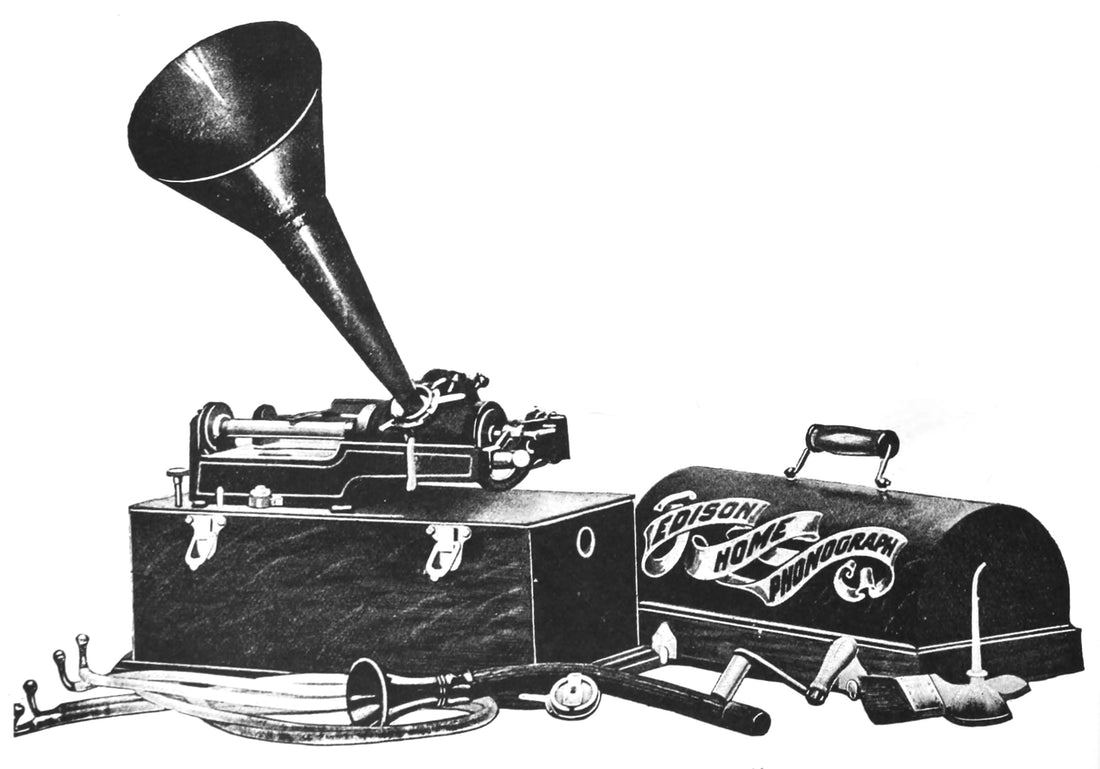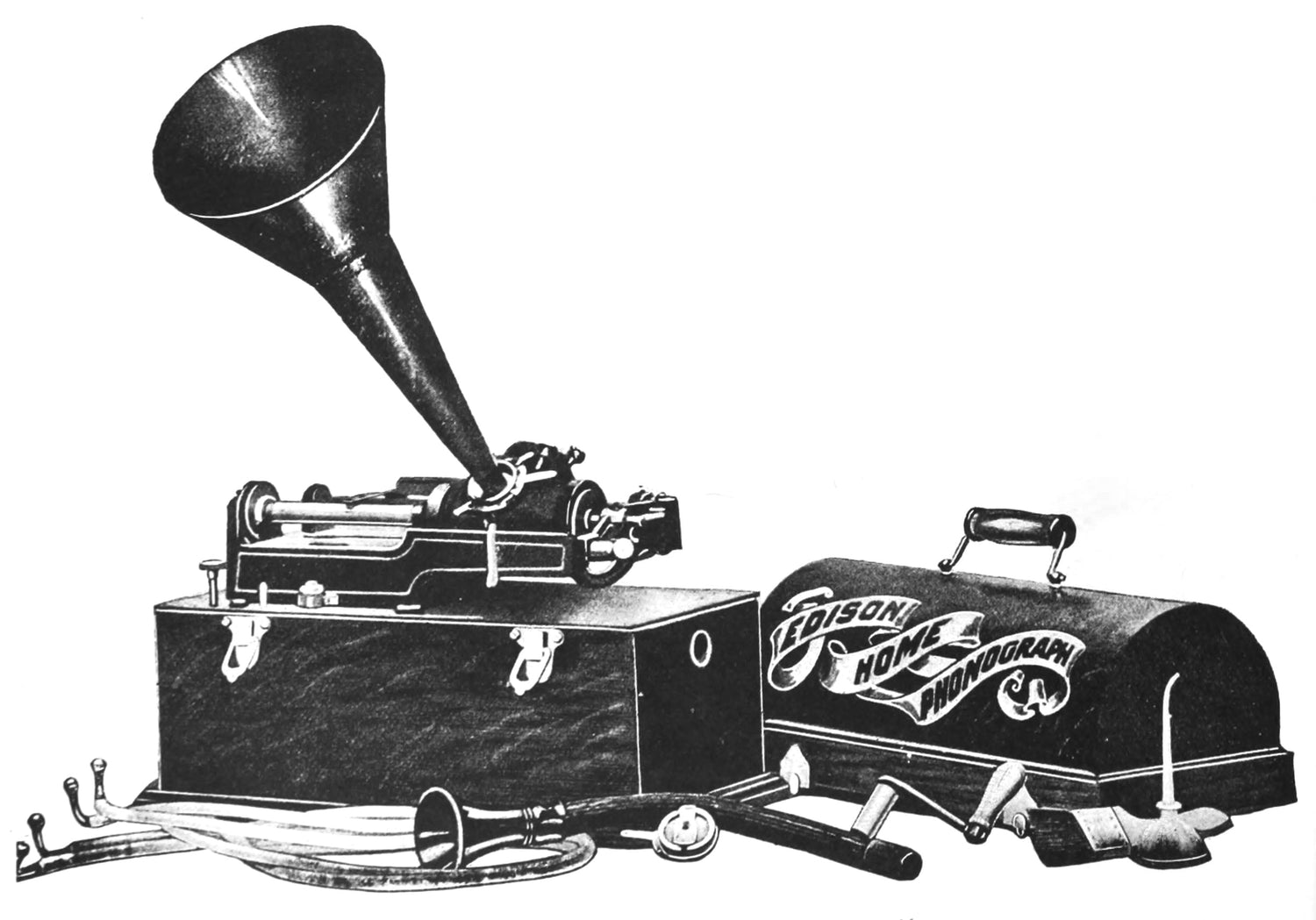From the clinking tunes of early records to the clear cut sounds of contemporary vinyl, the phonograph has been an important contributor in the production of music listening. This innovative device was invented in the 19th century and was the first device to record and playback sound, thus forming a basis for the modern audio electronics.
The Birth of the Phonograph
In 1877, Thomas Edison invented the phonograph, an apparatus that could both record and replay sound. Earlier attempts at sound recording were fails; they could only show the vibrations (e.g., Léon Scott's phonautograph). Edison's invention was able to play back recorded sounds, and this made a huge difference in the world. What was the first phrase recorded? "Mary had a little lamb."

(Edison and His Early Phonograph)

The first phonograph used a tinfoil covered cylinder which was wound under a stylus to record and replay sound waves. Not quite. This design had its limitations—tinfoil recordings were quite fragile and the sound quality was not the best. After a brief time, Edison himself improved the phonograph by offering wax cylinders which lasted longer and had less tinny sound.

(Two people holding up a phonograph sheet, 1880)
Fun Fact: The phonograph was first introduced by Edison for business use, for example, for dictation and not for music. It was only after that the entertainment value of the recorded sound was discovered.
The Evolution of the Phonograph
Following up on Edison's achievement, Alexander Graham Bell and his fellow workers at the Volta Laboratory came up with wax cylinders in the 1880s. These cylinders gave a better and more durable sound output. Then, Emile Berliner advanced this further in the 1890s with the gramophone which used flat discs instead of cylinders a form that would prevail for recorded music.
Berliner’s invention made it possible to produce records in large quantities such that music could be made available to many people. The gramophone’s needle marked the grooves on a disc that rotated on an arched platform and the sound was amplified through a horn. This mechanical system was used for years in record players even after electrical components were added to it.

(Street Gramophone Player, 1920's)
Fun Fact: The word ‘album’ is related to the older practice of selling collections of 78 RPM records in book-like ‘albums’ – just like a photo album!
The Rise of Vinyl and Modern Turntables
Phonograph technology was developing at a rapid rate in the early 20th century. By the 1940s, shellac records were replaced by vinyl discs which were more durable and had a longer playing time. The LP (long playing) record was introduced by Columbia Records in 1948 so that an entire album could be played on one disc, while 45 RPM records from RCA drove single sales.

(Columbia Masterworks LP, 1953)
As turntables became more complicated, they started to incorporate electric amplification that would eliminate the need for the large acoustic horns. By the 1970s and ’80s, hi-fi audio systems and direct-drive turntables became popular for DJs to use for mixing and scratching in hip hop and electronic music, though.
Fun Fact: The first rock album to be released on the vinyl LP format was The Voice of Frank Sinatra in 1948.
The Phonograph’s Place in the Digital Age
When CDs, MP3s, and streaming services started to pop out, one might have thought that the phonograph would have been largely forgotten. Nevertheless, vinyl records have seen a significant rise in recent years. This is because audiophiles appreciate the warm and rich sound that comes with them while collectors appreciate the tangible and artistic nature of vinyl releases.
This is where A2D2 Stream comes in. It enables users to play analog formats like vinyl through modern digital speakers, thereby combining the nostalgia of classic records with the convenience of contemporary audio technology, no matter where you are.
Why Do People Still Love Vinyl?
Despite the convenience of digital technology, many people love music on vinyl. Why? Here are a few reasons:
Sound Quality – Some people say that vinyl sounds better, richer, and warmer than digital formats.
Tangibility – You get to hold a physical record, look at the artwork, and place it on a turntable, which is a much more immersive experience.
Nostalgia – Cranking up the records takes many down memory lane to the good ol’ days.
Collector’s Value – It’s fun to hunt for limited pressings, colored vinyl, and rare albums when collecting vinyl.
Fun Fact: Vinyl records are the only music format that has seen growing sales every year since the early 2000s!
Strange and Unique Phonograph Records
Phonographs have been put to some bizarre and fascinating use outside of music throughout history:
- Golden Records in Space: Two golden phonograph records were sent into space aboard the Voyager spacecraft in 1977 containing sounds and music from Earth if they were ever found by an extraterrestrial.

- X-Ray Records: In the Soviet Union, X-ray films, illegally pressed with banned Western music, produced eerie 'bone records

- Talking Dolls: Early talking dolls used Edison's phonograph technology, but were notoriously creepy!

(Talking Doll)
Explore More:
- For more information on Thomas Edison and his discoveries, visit the Edison National Historic Site.
- A detailed study of the history of sound recording from the Library of Congress.
- Discover how vinyl is making a comeback and affecting the music market with Vinyl Me, Please.
For the beginner or professional and for everyone who has ever experienced the wonder of analog sound, the history of the phonograph is a history of a product that has always been and will always be important in the world of music. With innovations like A2D2 Stream, the legacy continues to grow; hence, vinyl remains an essential part of the listening world.
A2D2 Stream Analogue and Digital World Connector
As the history of the phonograph exemplifies the enduring power recorded music, the development of the sound recording industry has also been ongoing and one of the latest developments here is A2D2 Stream, which has been developed to close the gap between the analogue and digital soundscape.

An Overview of A2D2 Stream
Analogue-to-Digital Stream or A2D2 Stream is a new technology that enables the real-time conversion of analogue phonograph records into high-definition digital streams. Where conventional digitization methods provide a one-time conversion of files, A2D2 Stream maintains the dynamic tonal range and depth of vinyl recordings while providing the convenience of digital playback.
What’s New With A2D2 Stream?
The phonograph, which appeared at the end of the 19th century, has become a symbol of auditory nostalgia and technical progress. Still, with digital streaming services having taken over the music industry, the authenticity of analogue sound was often sacrificed for the convenience of digital. A2D2 Stream offers a possible solution to this by combining the best of analogue warmth and richness with the convenience of digital formats.
The Importance of Preserving Authenticity
The technology reproduces the details of the vinyl records, including the minor vibrations, the touch of the needle, and the sonic details that are usually lost in other forms of digital conversion.
Real-time Streaming: Music enthusiasts can enjoy live played vinyl music without having to digitize or edit the tracks themselves.
Enhanced Accessibility: People can easily experience the phonograph’s recordings at home or while traveling through modern digital platforms.
The Phonograph Revival in the Future Through A2D2 Stream, it is now possible to play vintage phonograph records not only on turntables but also through modern digital platforms. This technology opens new opportunities for analogue sound restoration and offers modern audiences a chance to enjoy historical and vintage vinyl collections. While exploring the phonograph’s history, innovations like A2D2 Stream ensure that analogue sound quality will always be significant in the history of music and that the vinyl effect will never fade, despite the digital trend.
 (A Hyderabadi Nawab Ghalib Jung and his friends listening to phonograph in Hyderabad. 20/05/1891)
(A Hyderabadi Nawab Ghalib Jung and his friends listening to phonograph in Hyderabad. 20/05/1891)
Explore some of our related blogs here:
Spinning History: Rare 78 RPM Records on Display in Museums
Vinyl Visions: How Peter Doig’s 'House of Music' Turns Art into Sound
Before Podcasts: The Fascinating World of Educational Vinyl Records
The Intersection of Music and Gaming: From Soundtracks to Musical Playing Cards
Phonograph Record Player: A Buyer’s Guide
The Ultimate Guide to Pairing Turntables and Speakers to Achieve the Ideal Audio Quality
Turntables and Needles: Everything You Need to Know for the Best Sound Experience
Vinyl Record Store Near Me: London
Notable Cassette Shops in Big Cities Around the World for Collectors
The Best Turntable Shops in London
Where Can I Buy Vinyl? The Best Places to Find New and Vintage Records
Moriz Jung: The Artist Who Captured the Magic of Early Phonographs
10 Fun Facts About Vinyl Records That Every Collector Should Know


